“Everyone was nervous … people were afraid they’d lose their jobs and they wouldn’t get business. People were afraid.”
Veteran Las Vegas journalist and Weekly columnist Steve Friess remembers the scene from a Coming Out Day gathering in 1996. Twelve people attended. “There was a sense that this was a very backwards, conservative place for gays at that time.”
Tracing back further, the situation looks far worse than the fear of lost livelihood. Boulder City-native Dennis McBride remembers the ’70s and ’80s, a time when, he says, gays were openly persecuted in Southern Nevada. “I remember when [gay] bars were routinely raided, when people were entrapped. They were trapped in rest stops along the highway, and they were picked up on the streets—based on the supposition that they were tricking.”
Things have improved immensely since then, but change didn’t arrive overnight. It wasn’t until 1993 that Nevada abolished a sodomy law that had permitted some of the injustices that local historian McBride describes. Since then, Las Vegas has experienced setbacks and advancements along the road to social equality for the city’s gay, lesbian, bisexual and transgender population. And even with the improvements, some say the Valley has a long way to go.
A recent spate of gay teen suicides motivated Dan Savage, editor of Seattle alt-weekly The Stranger and author of the nationally syndicated column Savage Love, to post a YouTube video with his partner, sending a message of hope to gay teens and giving birth to the worldwide phenomenon now known as the It Gets Better Project. The campaign assures gay youth that an adult life with a supportive community, friends and relationships is possible.
You can feel that same spirit of optimism here. Las Vegas might not enjoy the comforting environs of a long-established gay enclave, but organizations are working to change that. An integrated web is forming, and a crowded calendar of events and activities is gaining momentum. For the local gay community, Las Vegas truly appears to be getting better.
In the wake of the 1969 Stonewall riots in New York City, widely considered the beginning of America’s gay rights movement, Nevada began opening up. Slowly. “In the 1980s and 1990s the stigma about being gay began to erode pretty quickly. It took longer here,” McBride says. The Review-Journal started including non-married partners in obituaries. The culinary union began recognizing domestic partners and including sexual orientation in its contracts’ non-discrimination clause. And several resorts followed the union’s lead.
But when Friess moved here from Illinois in 1996, he found a small and still somewhat cowed gay community. Many prominent LGBT gaming and media executives were still closeted, and the social calendar for LGBT Las Vegans was extremely limited. “There just wasn’t much of a connective tissue for gay people in the city,” Friess says.
Friess moved away in 1999. When he returned three years later, the difference was like “night and day.” Well-known Las Vegans were stepping out of the closet, and the business and government sectors’ relationships with the gay community were progressing quickly.
In May 1999, the state passed the Employment Non-Discrimination Act, which banned discrimination in the workplace based on sexual orientation. The ball was finally rolling.
“The gaming industry suddenly realized that the gay market was really attractive,” Friess says. As high-end resorts like the Bellagio and Venetian sprouted up on the Strip, a growing shopping and dining culture drew more LGBT tourists to town. “And there’s a connection here: When gay customers became important to the casino industry, the casino industry turned to the gay executives they knew to learn how to address them, how to market to them. That started opening something up.”
As Las Vegas began competing with New York and San Francisco, many Strip resorts started actively marketing to a gay audience. New York-New York spearheaded that movement in 2002—incidentally, the same year Nevadans struck down gay marriage at the polls (67 to 33 percent)—with the “Real New Yorkers Love New York-New York” print advertisement, featuring three men from New York City’s gay Chelsea neighborhood. It wasn’t long before other resorts jumped in. Harrah’s launched a gay marketing campaign in 2006, focusing on Paris Las Vegas after market research found it to be the company’s best fit for LGBT consumers.
“There was something sort of comforting when I got that press release from Harrah’s,” Friess remembers. “I thought ‘Wow, look at how far we’ve come.’ It means something to people who live here.”
And it does. As Gwen Migita, Caesars’ corporate director of sustainability and community engagement, points out, “Marketing is a component of a greater company statement.” By turning their marketing efforts toward gay customers, the resorts sent a message: that they were gay-friendly across all departments. Resorts lining the Boulevard now strive for inclusion on the Human Rights Campaign’s annual Best Places to Work list, which rates companies’ commitments to LGBT employee equality.
Some of the city’s resorts are also now home to LGBT-exclusive marketing departments and separate websites aimed at attracting LGBT customers. Some of these sites picture gay and lesbian couples together; some feature the rainbow colors of the iconic gay pride flag. Wynn Las Vegas and Encore recently added a Pride Concierge team, which provides information about gay nightlife venues, offers advice on gay-friendly restaurants and distributes gay publications to guests. “It’s just part of being comfortable in a place that you are staying in,” says team member John Arnos.
Those sorts of advancements might be geared toward tourists, but to the local gay community, they are important signs of continued change, too. “I do think that the fact that the destination became more appealing and more interested in gay people and gay tourists had a really significant trickle-down effect around the city,” Friess says.
Joel Sanchez was a Southern California high-school soccer star, expected to receive a collegiate athletic scholarship. But after coming out, “everything went downhill,” the 39-year-old recalls. The gay rights movement was still quite young and technology such as Facebook and YouTube didn’t exist to enable a wide-reaching campaign like It Gets Better, a silver lining that youth like Sanchez may have benefitted from. Tensions with his family got so bad, the now-local businessman quit sports and dropped out of high school.
Sanchez later re-enrolled and received his diploma, but things really got better after he moved to the Valley and discovered Las Vegas Gay Athletics, Arts and Activities. “When I found there was such a thing as gay athletics, it really gave me a second chance in life,” Sanchez says. “I saw that I wasn’t alone.”
This year, the nonprofit Las Vegas Gay Softball League, which operates under the LVGA3’s umbrella, sent two teams to play in the North American Gay Amateur Athletic Alliance Gay Softball World Series in Ohio. Volleyball and basketball leagues have also launched in recent years. “When I started calling Vegas home there was a big, big thing missing out here,” Sanchez says. “It was hard to make friends because you never knew when they were going to be gone. [LVGA3] established something different other than just going to the bars.”
Of course, nightclubs and bars remain an important component of gay life in Las Vegas. Along with Strip-side Krave and a circle of bars along Paradise Road dubbed the “Fruit Loop,” gay nightlife has branched into daylife with events like Temptation Sundays at the Luxor Pool and into the mainstream through themed nights like Revolution’s Closet Sundays.
But these days, Las Vegas’ gay population has other ways of creating a sense of community. Sin City QSocials, a 5-year-old social networking organization, has hosted more than 250 social networking events around the city, in gay and straight venues, and now boasts 6,300 members.
The group regularly partners with community allies. A Martini Mixer on March 8 doubled as a fundraiser for Golden Rainbow, which provides housing and financial assistance for locals living with AIDS. Similarly, QVegas, a local LGBT magazine, often pairs with the Human Rights Campaign’s Las Vegas steering committee to host social events. The magazine has also formed the QVegas Business Alliance, a networking group that holds monthly luncheons and after-work socials.
Tucked in a corner of the vast Commercial Center on Sahara Avenue, the Gay and Lesbian Community Center of Southern Nevada has been a sanctuary for gay, lesbian, bisexual and transgender Las Vegans since opening in 1992. Known simply as the Center, the organization offers a range of programs and services—support groups for LGBT youth and allies, gamblers’ anonymous meetings and Out of the (gender) Box, a biweekly discussion group for people who “identify outside of the ‘male’ and ‘female’ boxes assigned to us by society.” The Center’s stated mission: to support and promote “activities directed at furthering the well being, positive image, and human rights of the gay, lesbian, bisexual and transgender community and its allies.”
“Some of the issues that the community has been working on as far as equality issues have really brought the community together,” says executive director Candice Nichols.
In November 2008, the Center organized a rally in opposition to California’s ultimately successful anti-gay marriage Proposition 8. Nichols credits the rally for much of the important work that has followed. “Coalitions were formed, and I think some unity really came out of that whole process. Our advocacy campaign and programs just kind of exploded.”
Nevada’s 2010 legislative session saw the launch of Equality Days, Carson City’s first LGBT-focused lobbying opportunity—an effort the Center was heavily behind. Like-minded groups, such as the Human Rights Campaign, the Log Cabin Republicans and the American Civil Liberties Union, joined up with that effort for the second Equality Days installment in March.
“I’ve seen more organizations and community groups working together in the last five years than previously,” Nichols says. “I really see the community congealing and coming together like it hasn’t before.”
The momentum is exciting. LVGA3’s sports leagues are growing with each season; Sin City QSocials just celebrated its five-year anniversary. And the Center continues to grow, in services and reach. Gaps are being bridged, and people are coming together in support of the larger gay community.
In his video message, Dan Savage tells viewers, “One day you will have friends who love and support you, you will find love, you will find a community and that life gets better.”
In Las Vegas, those words are ringing truer and truer. Life here does seem to be getting better.
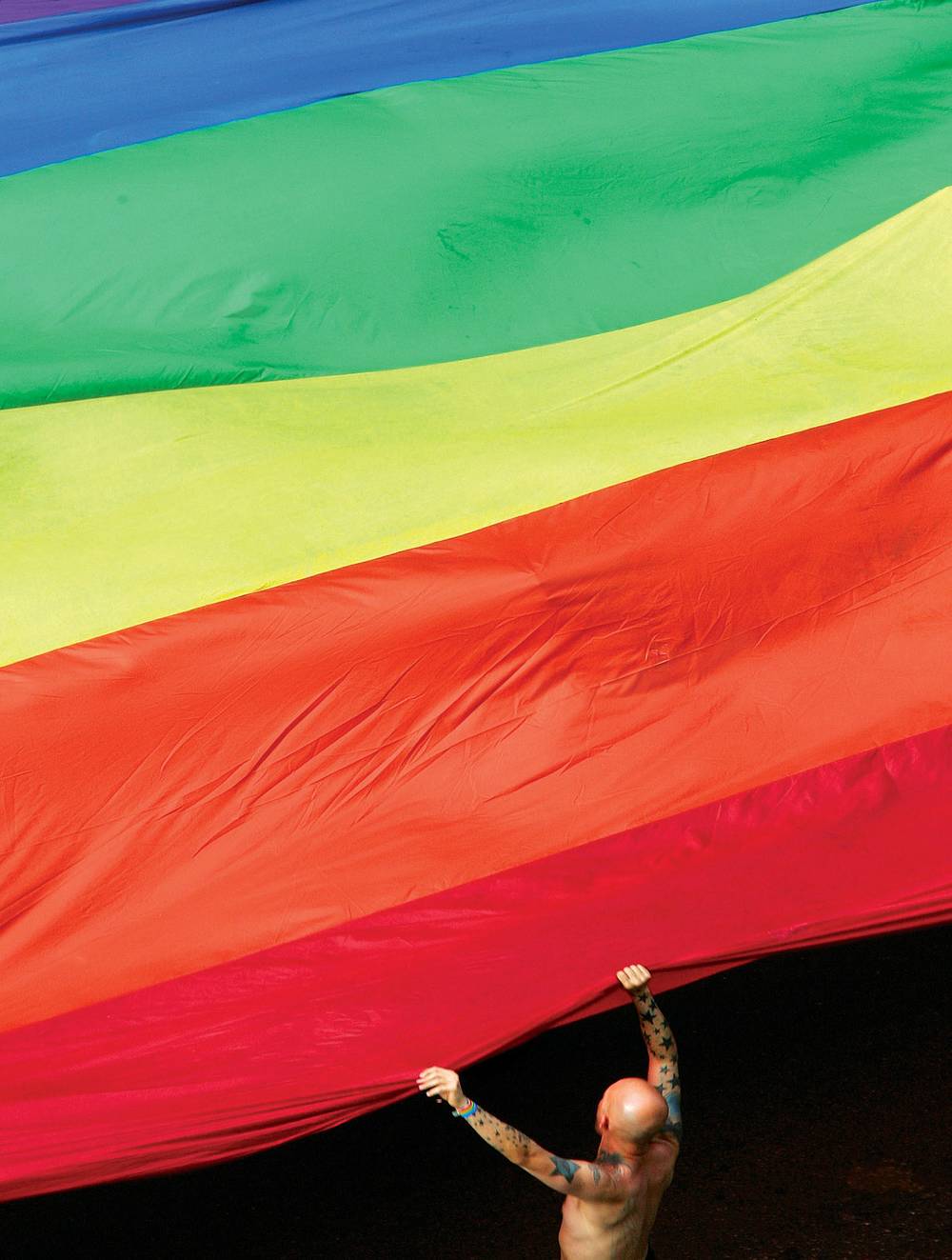
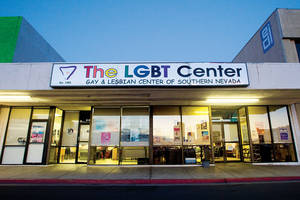
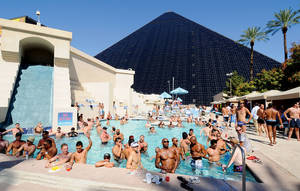
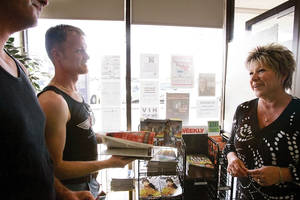
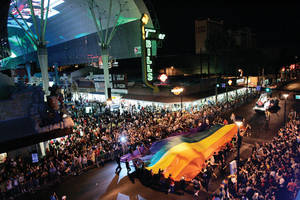

Previous Discussion: